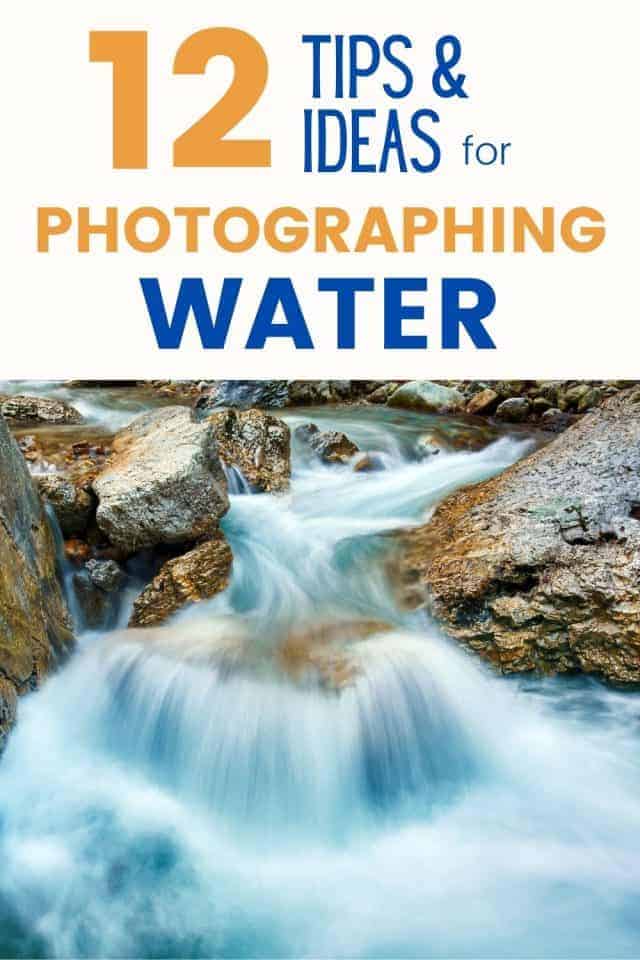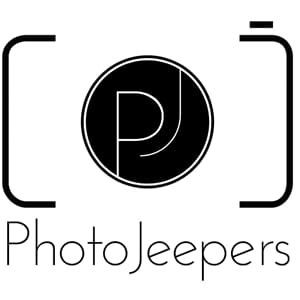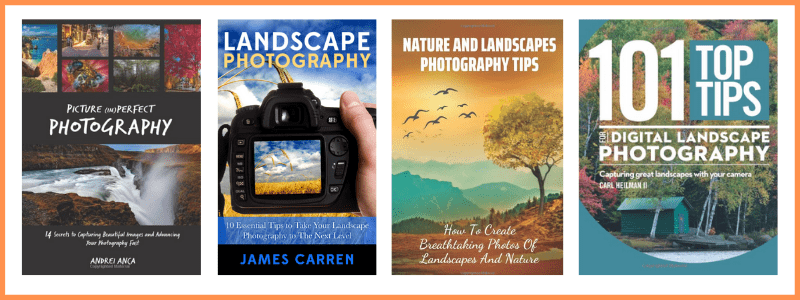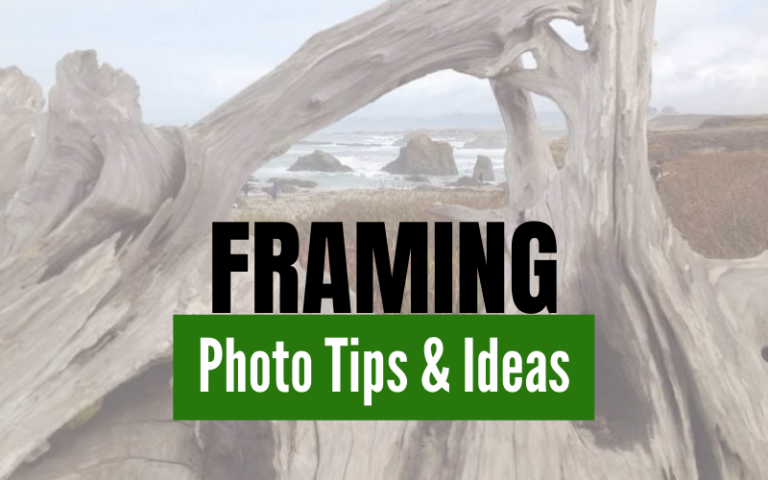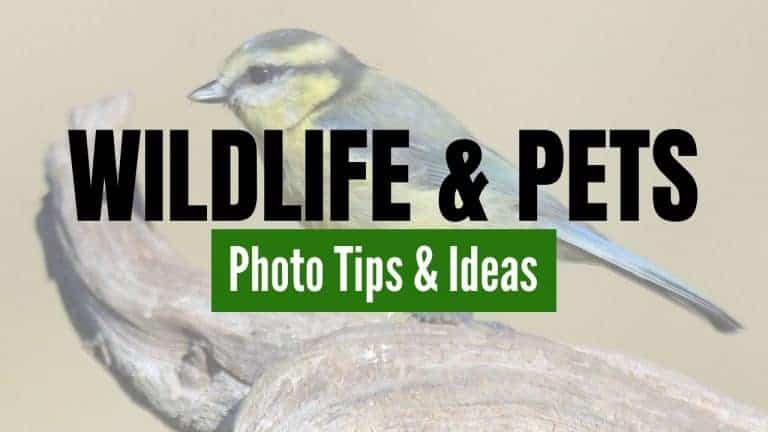Tips and Ideas for Photographing Water
Water is one of our favorite subjects to photograph, whether it’s a waterfall, river, lake or ocean. We’ve put together a list of tips and ideas for photographing water using basic photography techniques to compose each photo so you’ll create a strong image with impact to the viewer!
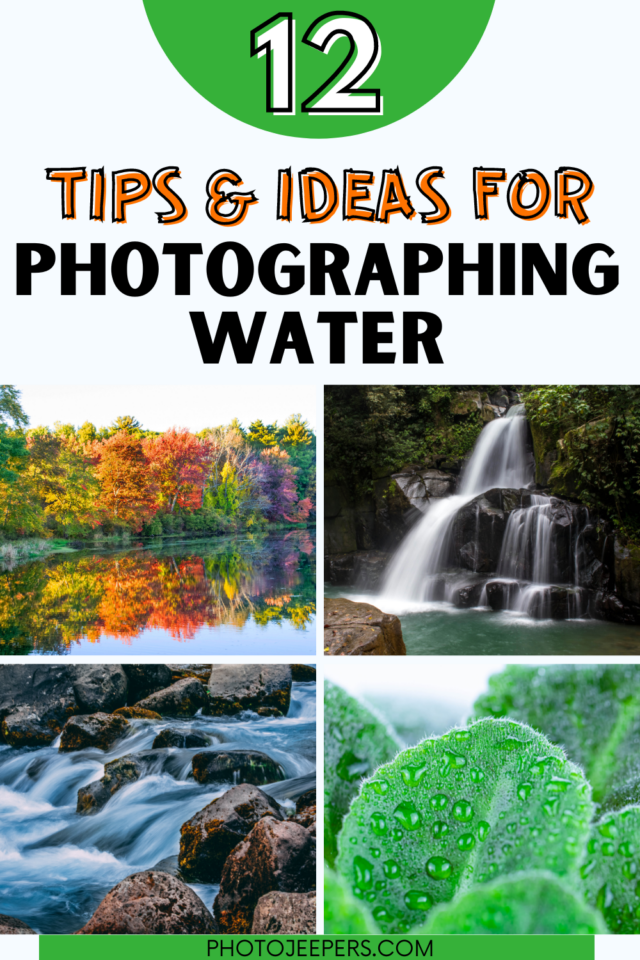
When it comes to photographing water, you can capture movement and motion blur or reflections on still water. You can experiment with different shutter speeds, lenses, and filters.
Photographing water can be tricky, but with the right knowledge and some practice, you can get great shots of water in all its forms.
Whether you’re shooting crashing ocean waves or tranquil streams, here are some tips and ideas for taking stunning photos of water.
This site contains affiliate links which means WE may receive commissions for purchases made through these links. We only provide links to products we actually use and/or wholeheartedly recommend! As an Amazon Associate, we earn from qualifying purchases. Read the full Disclosure Policy.
Camera Gear for Landscape Photography
- Tripod: take a look at these compact and lightweight travel tripods!
- Camera Bag: protect your camera from sand and water → We use Lowepro camera backpacks for outdoor photography.
- Neutral density filter: to compensate for variance of light you’ll need to use a neutral density filter. → Check out the Kase magnetic filters we use!
- Camera cleaning kit: remove dust or water that WILL get on your lens. NOTE: this is not for cleaning the sensor.
- Memory cards: purchase name brand memory cards since you’re trusting your images to the card! → We use Lexar and Sandisk!
- External hard drive: copy photos to a portable external hard drive ‘just in case’.
- Headlamp: use when taking sunrise and sunset photos!
Camera Gear at B&H Photo
Photographing Water
Check out our tips for how to photograph waterfalls and rivers. Then take a look at the water photo ideas shared by our photography friends to illustrate this compositional technique.
WATCH the video as we discuss tips to photograph water and the techniques used in each image.
Water Photography Ideas
One of the best things you can do to improve your waterfall and river photography technique is to spend time taking pictures. Get to know your camera and experiment with settings.
Check out the water photography tips and ideas below. Use these photo ideas to get out and capture your own images of water!
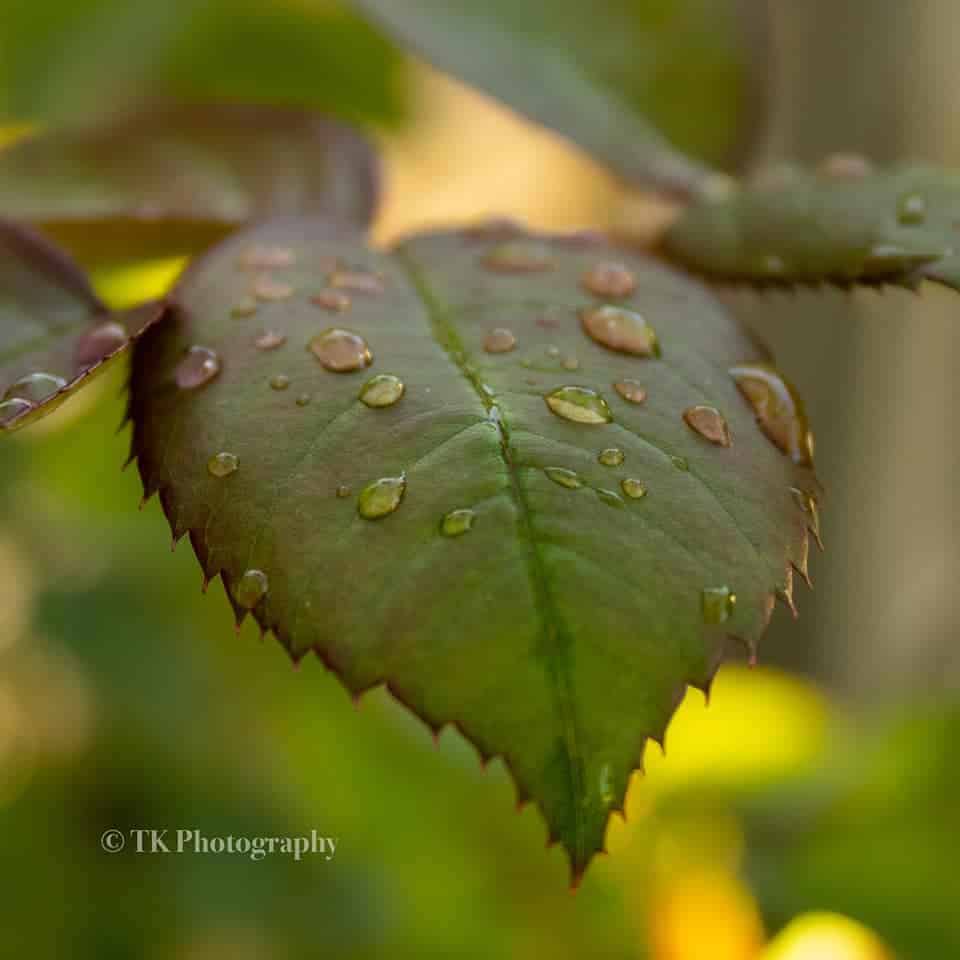
Water Drops
Capturing droplets of water on a subject will lend a sense of drama and action to a photograph. This can be accomplished by droplets on a surface, as Tony Kendrick has captured in this stunning image, or by water dripping from a subject. In the photo above, Tony filled the frame with the leaf and its background structure drawing the eye of the viewer immediately to the action of the photograph.
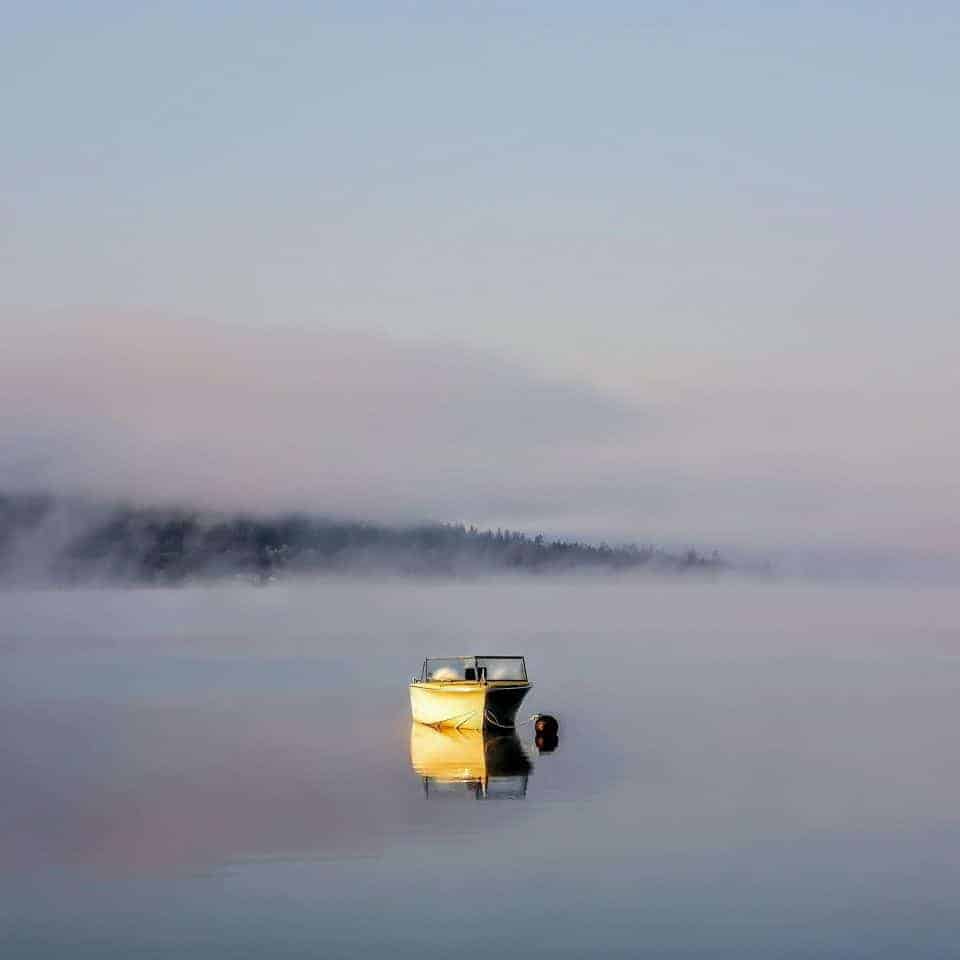
Lakes
Lakes are wonderful subjects for photographing water. The dramatic lighting and weather effects that occur around lakes provide ample opportunity for taking impactful photos. Dani McCulloch captured stunning weather and lighting effects in her image here of a boat on a lake. She also utilized the rule of thirds in placing the boat along the lower section of the grid. Lakes provide great opportunities to capture dramatic reflections in water.
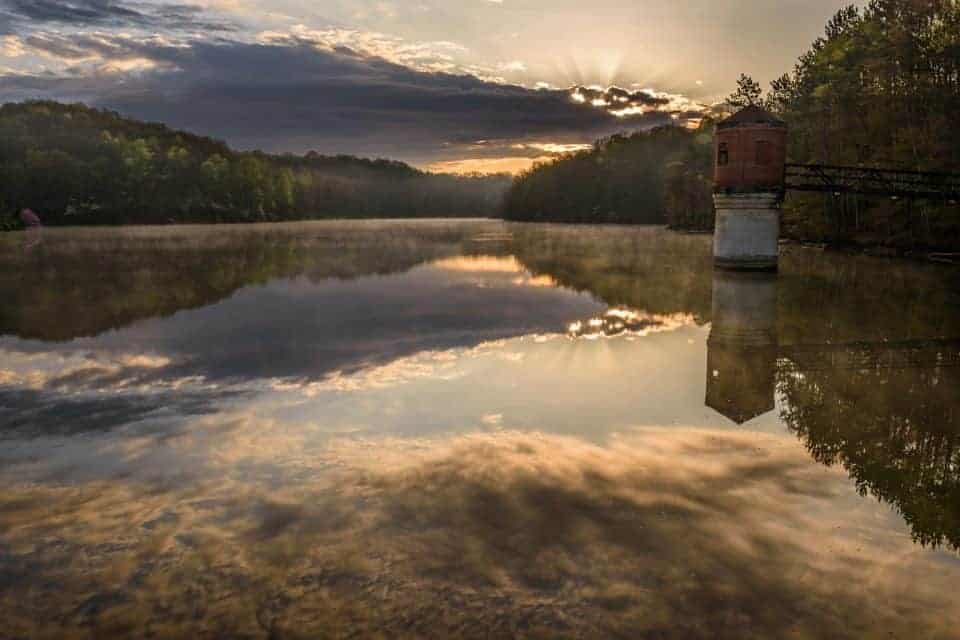
James Griffin timed his visit perfectly in capturing this amazing lake reflection. The cloud formations and lighting occurring in this scene and reflected in the lake provided him with the compositional elements of this fantastic capture.
James placed the horizon line along the upper section of the rule of thirds grid, establishing emphasis on the reflection in the water. The horizon line, tower structure, and angular characteristics of the shoreline are all complimentarily composed to acquire the attention of the viewer to maximize interest.
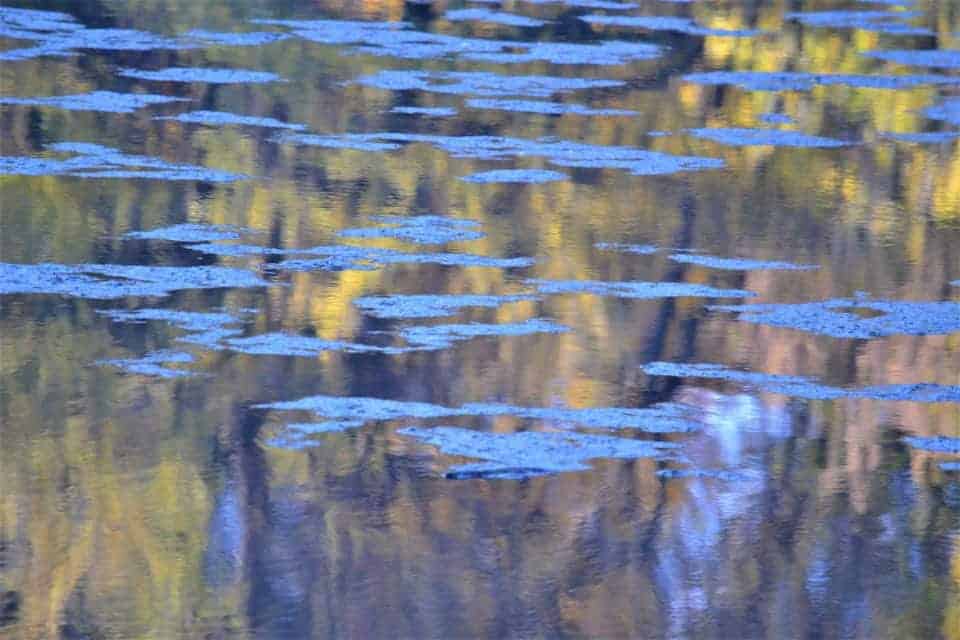
We also see interesting patterns in the movement and reflective nature of water in lakes. Marilyn Switzer focused on these characteristics of water and filled the frame with this interesting pattern captured on the surface of a lake.
She removed all other elements of the scene from her composition to focus attention on the pattern established by the colors and shapes reflected on the water’s surface. This reflection, combined with the textures of the surface itself, provided Marilyn with this creative photographic opportunity.
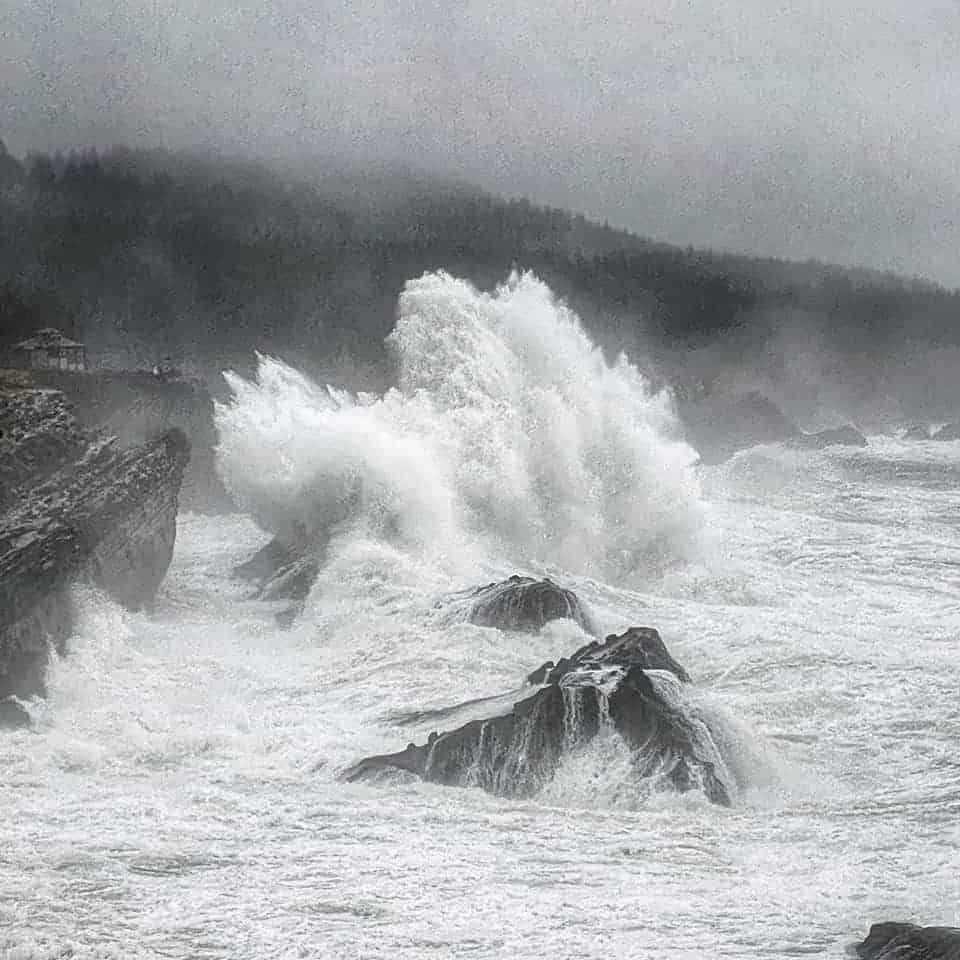
Movement
In the ocean we find a fantastic array of movement, action, and drama. Focusing on a part of the ever-changing nature of the ocean is a great way to capture stunning, provocative images.
Daphne Brislin isolated her composition to a part of the ocean view before her to capture this impactful image of the effects of weather on ocean waves. She chose a faster shutter speed to freeze the motion of the waves in this incredible photo and convey the explosive nature of weather on water.
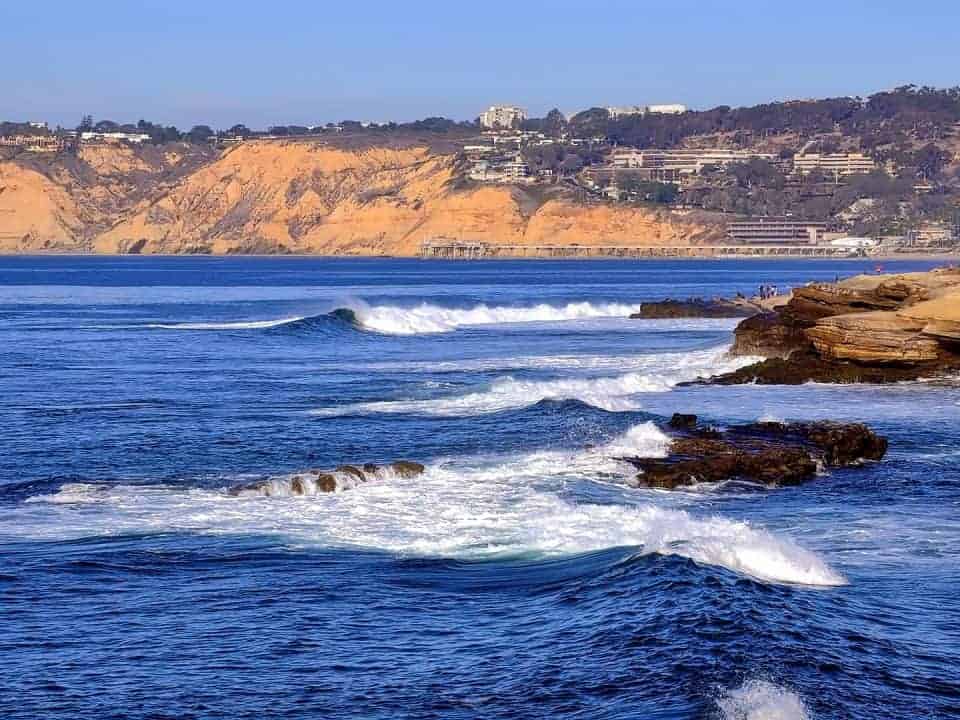
In this beautiful photograph, Jeff Hall captured a more tranquil ocean scene. Here the focus is on the contrast of color in the waves and lighting of the landscape.
Jeff composed this image to showcase foreground, midground and background that emphasize depth in the picture.
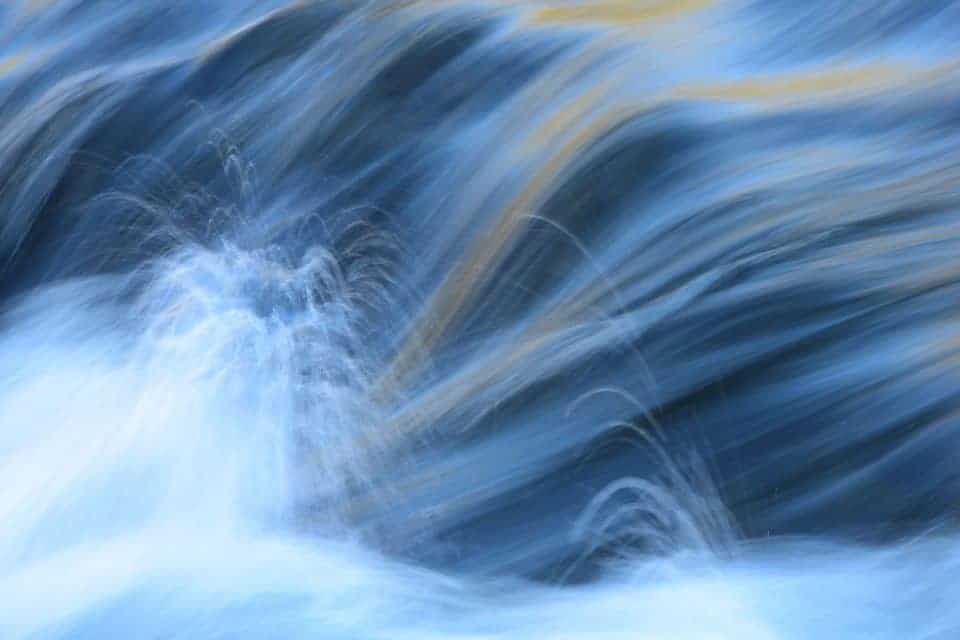
Rivers
Rivers are a great source for capturing the dynamic energy of flowing water. Jim Bigham emphasizes the beauty of liquid motion in this fantastic fill the frame approach to photographing rivers.
Jim has composed this picture to focus on the movement of the water, as well as its energy in impacting obstacles to its flow. Using the long exposure technique, a slower shutter speed to blur the motion of the water, further enhances the action of the image.
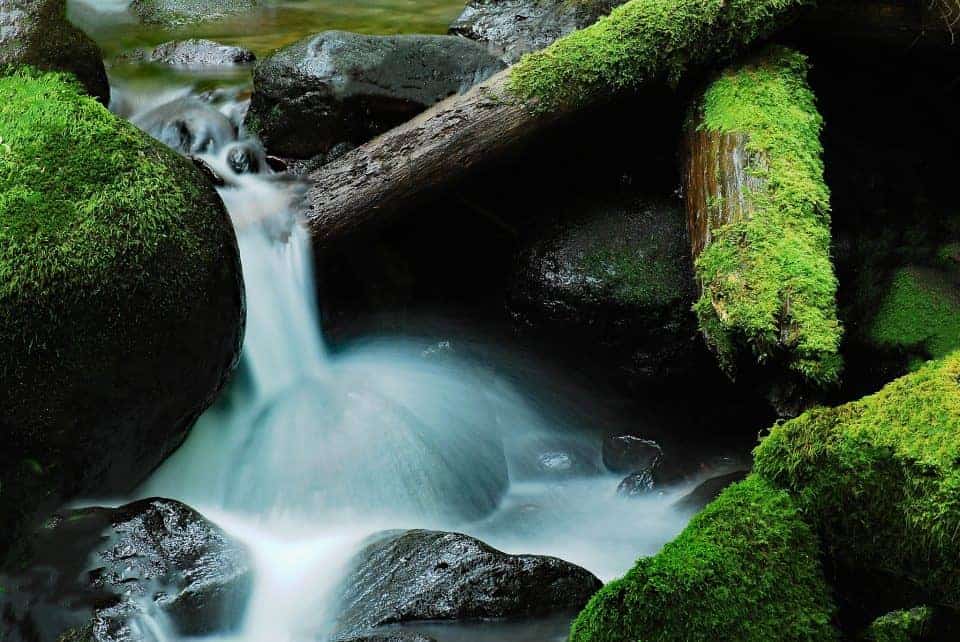
Brian Bourbeau has provided us with another beautiful example of the impact of flowing water in an image. He uses long exposure to emphasize the movement of the water and environmental elements to frame the subject. The mossy wood not only frames the moving water but establishes angles within the composition that help to direct the eye of the viewer.
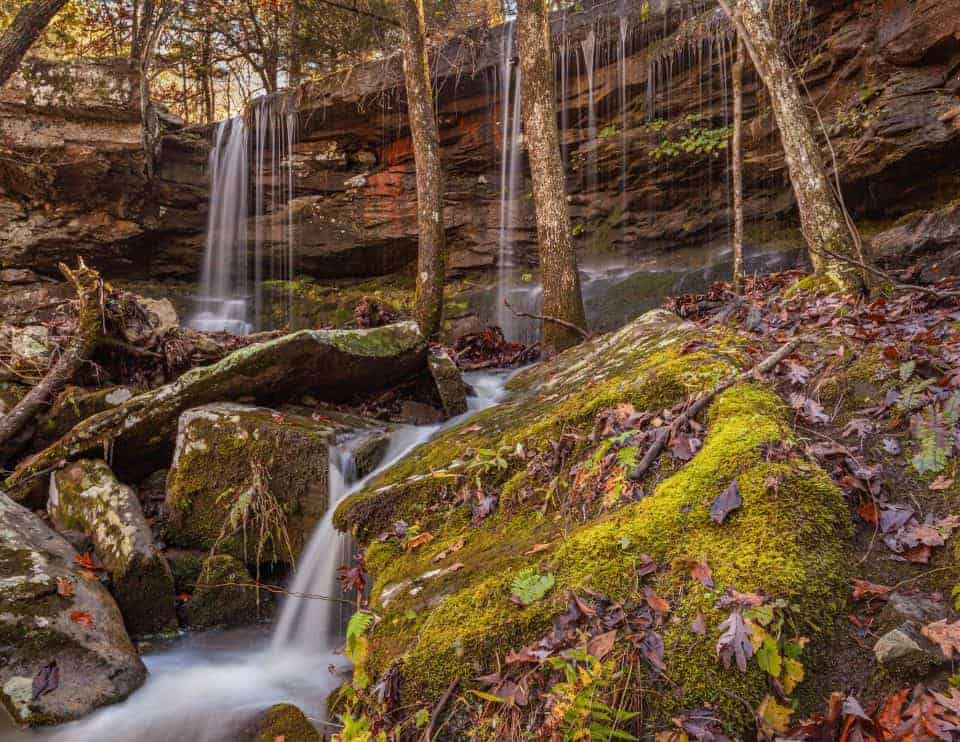
Waterfalls
Waterfalls have immediate eye-catching appeal to a viewer. Mel Simpson has captured the wonder and beauty of waterfalls brilliantly in the above photo by using a slow shutter speed to blur the motion of the water to enhance its movement. The perspective puts the viewer right in the scene and the leading lines of the blurred water help to direct the viewer’s eye through the image.

In this gorgeous photograph Roy Goldsberry has captured a dramatic water scene including a waterfall, a lake, and a reflection. The above photo is taken at Yosemite National Park in the spring when the waterfalls are raging. It’s awesome when you can find a location to photograph a waterfall IN the reflection!

Story
Diane Kabbeko has used a water environment to capture this photo that tells a wonderful story. She illustrates how a photographer can include elements into the frame so the viewer knows exactly what’s happening. Diane positioned herself to get a perspective to include the lake, boat and fishing gear to tell the story of what’s happening in this picture.
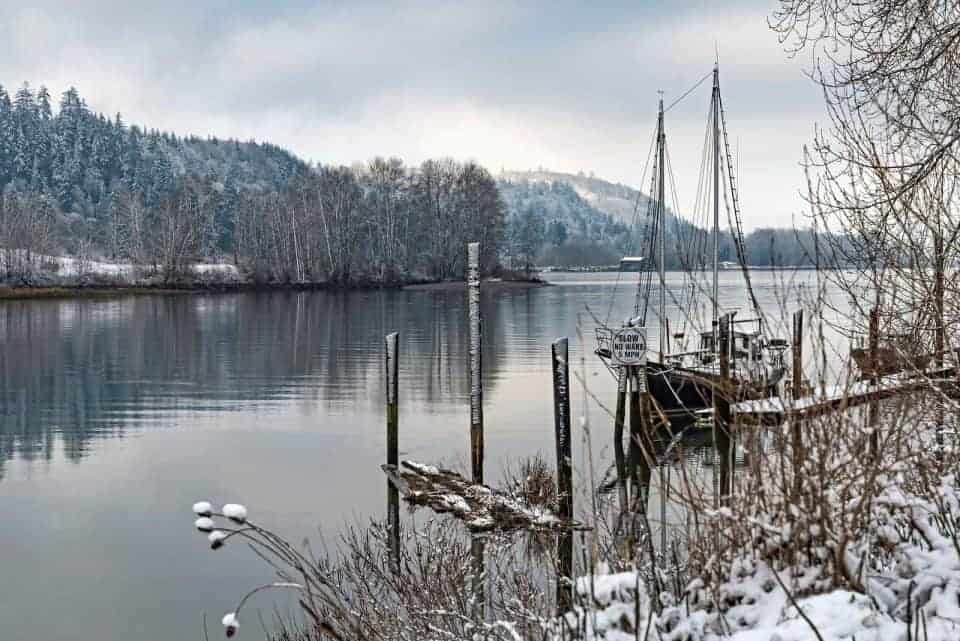
Stephen Nesbit provides us with another beautiful example of using a water environment in an image to tell a story. He composed this scene so it utilizes the river as a leading line to direct the eye of the viewer through the story. The foreground, midground and background provide depth to allow the viewer to move through the layers of the landscape
AMAZON Landscape Photography Books:
